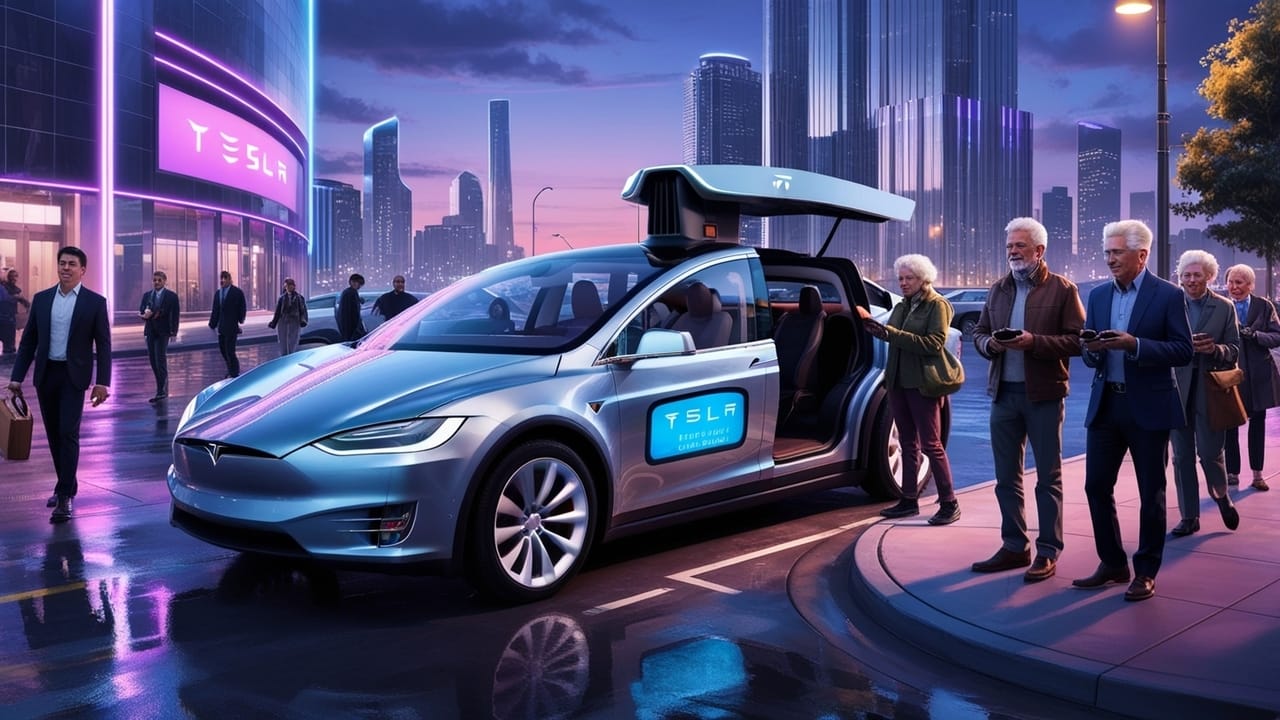Tesla is on the verge of transforming the ridesharing landscape with the anticipated release of its driverless robotaxi service. Expected to launch this month, this innovative addition to Tesla’s portfolio will allow vehicle owners to rent out their self-driving cars, potentially generating passive income while the car operates autonomously. This concept aligns with Tesla’s broader mission to redefine urban transportation, reduce personal car ownership, and accelerate the adoption of electric vehicles (EVs).
What is the Tesla Robotaxi?
Tesla’s robotaxi is a fully autonomous electric vehicle equipped with Tesla’s advanced Full Self-Driving (FSD) software. Designed to operate without a driver, it promises passengers a safe, efficient, and cost-effective alternative to traditional ridesharing services. Elon Musk, Tesla’s CEO, has long emphasized his vision for autonomous vehicles to be capable of functioning as a fleet of taxis, generating income for owners even while they aren’t behind the wheel.
Key Features of Tesla’s Robotaxi
Tesla’s robotaxi is expected to come equipped with a range of sensors, cameras, and Tesla’s proprietary FSD software. This advanced technology suite allows the vehicle to navigate complex urban environments, avoid obstacles, and interact safely with other road users. With continuous updates to the FSD software, Tesla is committed to improving safety and reliability. The goal is to create a fully autonomous experience, where passengers simply enter their destination, sit back, and enjoy the ride.
**1. Income Potential for Owners
Tesla’s robotaxi platform offers owners a unique way to monetize their vehicles. By joining Tesla’s robotaxi network, car owners can let their vehicles operate as autonomous taxis during idle times. This income-sharing model provides an opportunity for passive income while also contributing to the future of transportation. With Tesla’s expanding network, owners could see substantial income, depending on location and vehicle usage.
**2. Environmental Benefits
Tesla’s robotaxis aim to reduce the environmental impact of transportation by promoting shared mobility. As electric vehicles, these robotaxis help cut down on emissions, reduce air pollution, and support sustainable urban planning efforts. This aligns with Tesla’s broader mission to transition the world toward sustainable energy and foster a greener future.
**3. Safety and Reliability
Tesla’s FSD software has undergone rigorous testing and updates to enhance safety and reliability. The robotaxi platform will operate under strict safety protocols, with features such as automatic braking, lane-keeping, and obstacle detection. The vehicles will also receive real-time updates from Tesla’s cloud-based network, further improving their ability to navigate complex driving scenarios.
How the Robotaxi Platform Works
Tesla’s robotaxi service operates similarly to existing ridesharing platforms, with one major distinction: the vehicle is completely autonomous. Passengers can book a ride through Tesla’s mobile app, and a nearby Tesla robotaxi will arrive to pick them up. The app will allow users to set their destination, choose specific options, and even rate their ride experience. For Tesla vehicle owners, the app will include a feature to set their car’s availability for robotaxi use.
The Future of Autonomous Ridesharing
Tesla’s robotaxi network has the potential to disrupt the traditional car ownership model and significantly impact the ridesharing market. As more Tesla owners opt to join the network, cities may see reduced traffic congestion, decreased emissions, and a shift toward shared mobility solutions. This shift could also lead to a decrease in personal vehicle ownership as individuals choose autonomous ridesharing over traditional car use.
With the robotaxi launch, Tesla is taking a bold step toward a future where autonomous vehicles play a key role in urban transportation. As the technology advances and becomes more accessible, Tesla’s robotaxi network could pave the way for a new era in mobility, marked by sustainability, convenience, and economic opportunity.










